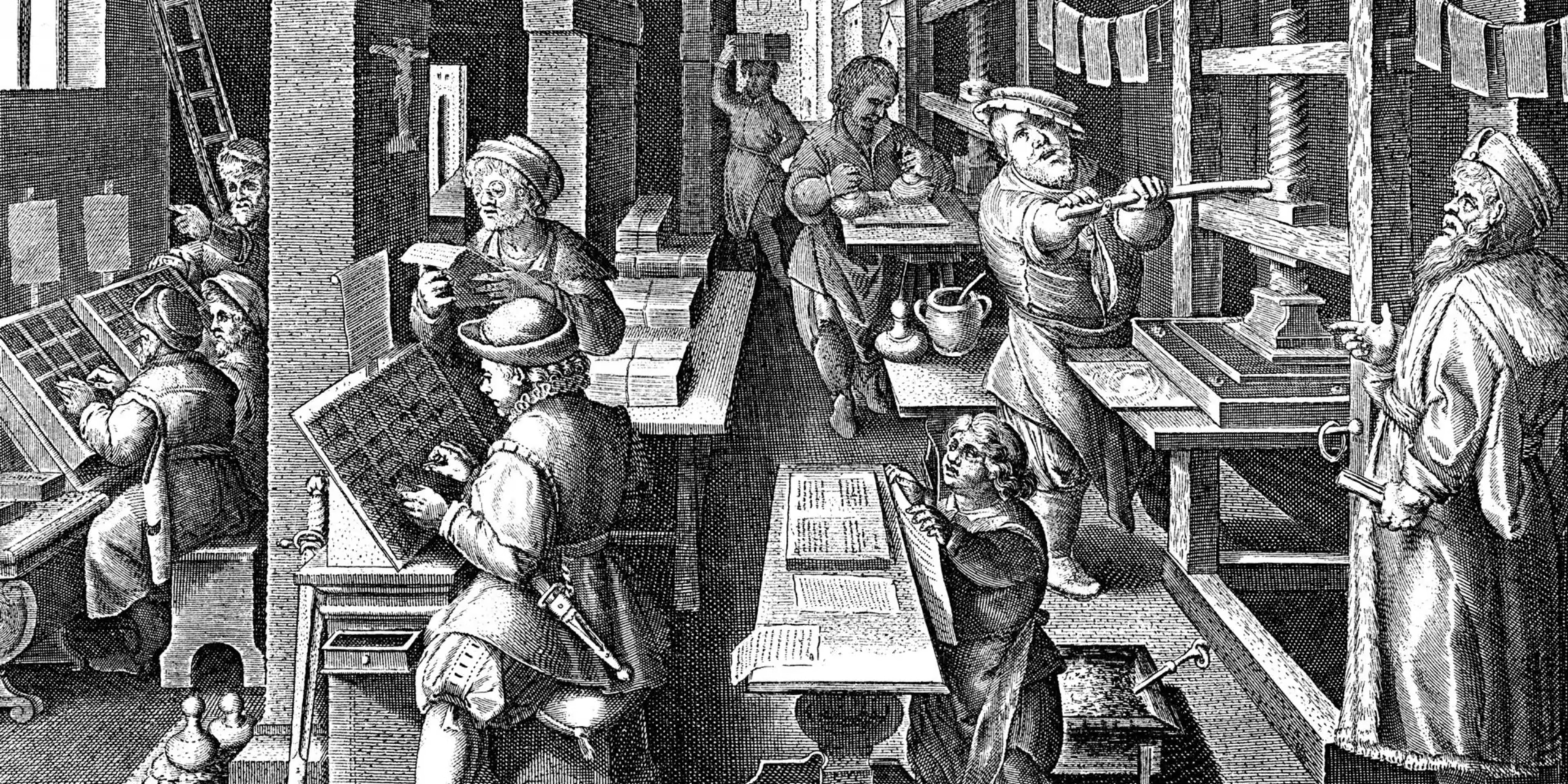
The Development of the Printing Press and Its Impact on Society
The invention of the printing press stands as one of humanity’s most transformative events. It revolutionized information dissemination, enabling the mass production of books, newspapers, and other written materials, thereby reshaping societies across the globe. This exploration delves into the printing press’s development, its profound societal impact, and its enduring legacy in the modern world.
I. From Woodblocks to Movable Type: The Genesis of Printing
The earliest forms of printing trace their origins back to ancient civilizations, most notably in China. Around the 7th century CE, the Chinese employed woodblock printing, a technique involving carving entire pages of text and images onto wooden blocks. This method, while effective for producing limited copies of religious texts, calendars, and other materials, was incredibly time-consuming and laborious. Each block could only be used to print a single page, rendering the creation of lengthy books a painstaking and expensive process. The limitations of woodblock printing restricted the dissemination of information, largely confining literacy and access to knowledge to the elite.
This limitation remained a significant obstacle for centuries. While various printing techniques emerged in different parts of the world, including Korea and Japan, none achieved the efficiency and scalability of the innovation that was about to transform the Western world. The crucial breakthrough came in the mid-15th century in Europe, specifically with Johannes Gutenberg, a German goldsmith and entrepreneur. Gutenberg’s genius lay not in the concept of printing itself, but in the development of movable type. His system utilized individual, reusable metal characters, enabling the efficient composition and recomposition of text for different publications.
This seemingly simple yet revolutionary adaptation drastically reduced the cost and time required for printing. Instead of carving a new block for every page, Gutenberg’s system allowed printers to arrange and rearrange individual characters, creating a virtually limitless number of pages from a relatively small inventory of type. Gutenberg’s press itself was a marvel of engineering, incorporating a sophisticated screw press mechanism to apply even pressure to the inked type, transferring the image onto paper with remarkable clarity and consistency. He also made significant improvements to the ink itself, developing a specially formulated oil-based ink that adhered better to the metal type and provided greater durability and sharpness to the printed image.
The materials Gutenberg utilized also contributed significantly to the success of his invention. He employed a high-quality paper imported from Italy, considerably smoother and more durable than the rougher papers previously used. This, combined with his metal type and improved ink, allowed for a degree of clarity and print quality far surpassing any earlier methods. The precise interaction between type, ink, paper, and press played a crucial role in making Gutenberg’s innovation so impactful.
II. The Printing Revolution: Transforming Education and Literacy
Before Gutenberg’s press, books were painstakingly copied by hand, a process that was both slow and expensive. This limited access to books and other written materials primarily to the wealthy and powerful. The cost of producing a single book could be staggering, making them luxury items inaccessible to the general population. Literacy rates were consequently low, confined largely to the clergy and the aristocracy.
The printing press dramatically altered this landscape. The mass production of books made them far more affordable and accessible. The increased availability of printed materials fueled an explosion of literacy. As books became cheaper, more people could afford to own them, leading to a rapid increase in the number of literate individuals across Europe. This had profound societal implications, empowering individuals with the ability to access and engage with information, fostering independent thought and critical analysis.
The initial impact was largely concentrated on religious texts, with the Gutenberg Bible being one of the earliest and most notable examples. The ability to mass-produce Bibles spurred religious reform movements, including the Protestant Reformation. Martin Luther’s Ninety-Five Theses, printed and rapidly distributed throughout Europe, became a pivotal catalyst for the Reformation. The printing press allowed for the rapid dissemination of religious ideas, challenging established authority and leading to significant religious and political upheaval.
The printing press’s influence extended beyond religious texts to encompass diverse fields of knowledge. Scientific works, philosophical treatises, and literary masterpieces found wider audiences, fostering intellectual exchange and stimulating progress in science, philosophy, and the arts. The Renaissance was profoundly influenced by the printing press’s ability to facilitate the widespread dissemination of classical texts and the creative works of a new generation of scholars and artists. The increased circulation of knowledge directly contributed to the burgeoning intellectual ferment of the era, driving innovation and shaping the intellectual foundations of modern Europe.
III. The Rise of Mass Media and Public Opinion:
The printing press didn’t just facilitate the production of books; it also gave rise to entirely new forms of mass communication. Newspapers, pamphlets, and broadsides emerged as powerful tools for disseminating information, influencing public opinion, and shaping political discourse. The speed and efficiency of printing allowed for the rapid distribution of news and information, connecting people across geographical distances and fostering a sense of shared experience.
Newspapers, although initially infrequent and limited in scope, quickly evolved into more regular publications. These early newspapers provided updates on current events, political developments, and social commentary. They played a significant role in shaping public perception of events and fostering a greater level of political awareness among the population. The accessibility of news to a broader section of society fostered a more informed and engaged citizenry, empowering them to participate more actively in political life.
Pamphlets, being relatively inexpensive and easy to produce, became a ubiquitous medium for disseminating political ideas, propaganda, and social commentary. They could reach audiences far beyond the reach of books, allowing for quick and widespread dissemination of both factual information and persuasive arguments. This contributed to the growing power of public opinion, as pamphlets were often used to support or oppose specific political causes, shaping public sentiment and affecting political outcomes.
The speed and accessibility of the printing press also made it a potent tool for both proponents and opponents of the established order. Governments used the press to promote their policies and influence public perception, while dissidents and reformers utilized it to challenge authority, mobilize support for social change, and spread their critiques to a wider public. The contest for control over the printed word became a critical dimension of political power, underscoring the significant role of the printing press in shaping the political landscape.
IV. Literature, Culture, and the Shaping of Identities:
The printing press exerted a profound influence on literature and culture, fundamentally transforming the landscape of literary production and consumption. Prior to Gutenberg’s invention, literary works were often created for a select audience, often patrons or the aristocracy. The printing press shattered this restrictive model, allowing authors to reach a vastly larger readership. The increased demand for printed materials created a new marketplace for literary works, leading to the emergence of professional writers who could earn a living from their craft.
The development of the printing press contributed significantly to the standardization of languages. As books were widely printed and distributed, they played a significant role in establishing common linguistic norms and promoting the development of national languages. This standardization helped to unify cultures and facilitated communication across regional boundaries, fostering a sense of shared identity and a more cohesive social structure.
The printing press facilitated the expansion of literacy across social strata, broadening the scope of literary culture and the number of people engaged with literature. This enhanced literacy led to a surge in literary production, fostering new literary genres and styles. The increased availability of printed works allowed for greater experimentation and diversity in literary forms, ushering in a new era of literary creativity and expression.
The affordability of printed materials also encouraged the development of public libraries, which became centers of learning and intellectual exchange. These libraries served as crucial resources for individuals who may not have been able to afford to purchase books, making learning and literary engagement accessible to a broader public. This democratization of access to information served as a vital catalyst for education and social progress.
V. The Enduring Legacy of the Printing Press in the Digital Age:
The advent of digital technology might seem to render the printing press obsolete. However, this assessment is far too simplistic. While digital media have undoubtedly transformed information dissemination, the printing press’s legacy remains deeply embedded within modern society.
The printing press created an infrastructure for information dissemination that persists today. The basic principles of printing — the arrangement of text and images, the use of ink, and the transfer of images onto a substrate — continue to inform digital printing technologies. Digital printing employs sophisticated methods to achieve similar results, but the fundamental concept of creating reproducible images on a substrate remains unchanged.
Moreover, the cultural impact of the printing press remains significant. The very concept of a book, the way we organize and consume information, and the societal structures that support literary culture are all shaped by centuries of print-based practices. The transition to digital media has certainly altered how we read and interact with texts, but the cultural significance of the printed word remains substantial.
While digital formats offer speed, flexibility, and cost-effectiveness, printed materials still possess advantages. Tangible books offer a more immersive and sensory reading experience, fostering a deeper engagement with the text. Certain materials, such as art books and high-quality journals, benefit from the aesthetic properties of print and its ability to capture nuanced details. Newspapers and magazines, while facing the challenges of digital competition, still occupy an essential niche in information dissemination, particularly for older demographics and for specific content. Similarly, marketing materials, educational texts, and high-quality archival documents often retain a preference for the printed format for durability and preservation reasons.
VI. Conclusion: A Revolutionary Invention’s Enduring Impact
The printing press revolutionized information dissemination, fundamentally transforming societies worldwide. It fueled the Renaissance, spurred the Protestant Reformation, democratized knowledge, and shaped the development of modern political systems and cultural identities. Although digital technologies have ushered in a new era of communication, the printing press’s legacy continues to resonate through the fundamental structures of information production and consumption that it established. Its impact on education, literacy, literature, and political discourse remains profound, underscoring its enduring significance in the history of human civilization. The printing press’s innovation wasn’t merely about technological advancement; it was about empowering individuals with access to knowledge, fostering critical thinking, and ultimately, transforming the course of human history. Its influence continues to shape our world today, reminding us of the transformative power of accessible information and the lasting impact of a single, revolutionary invention.


